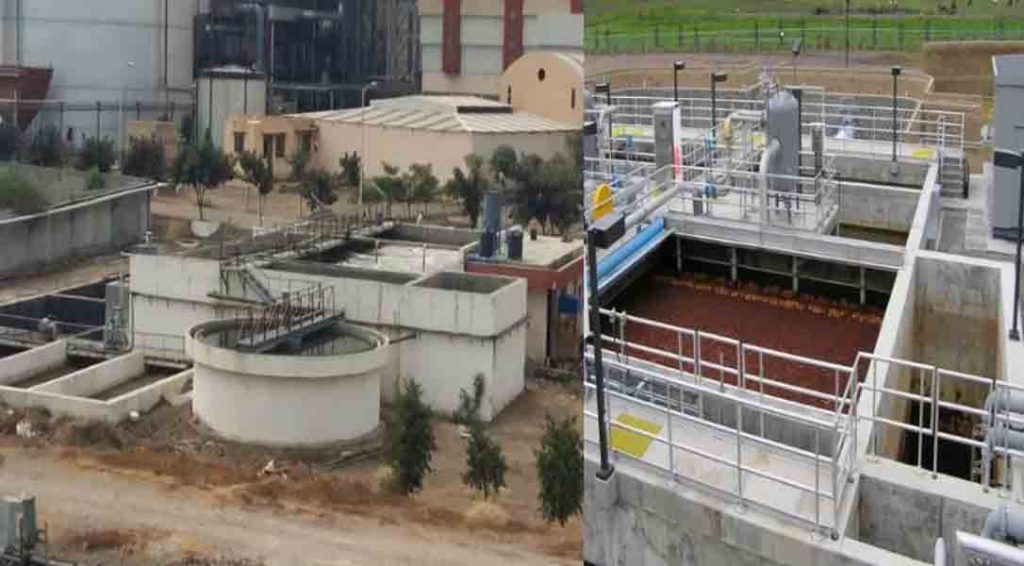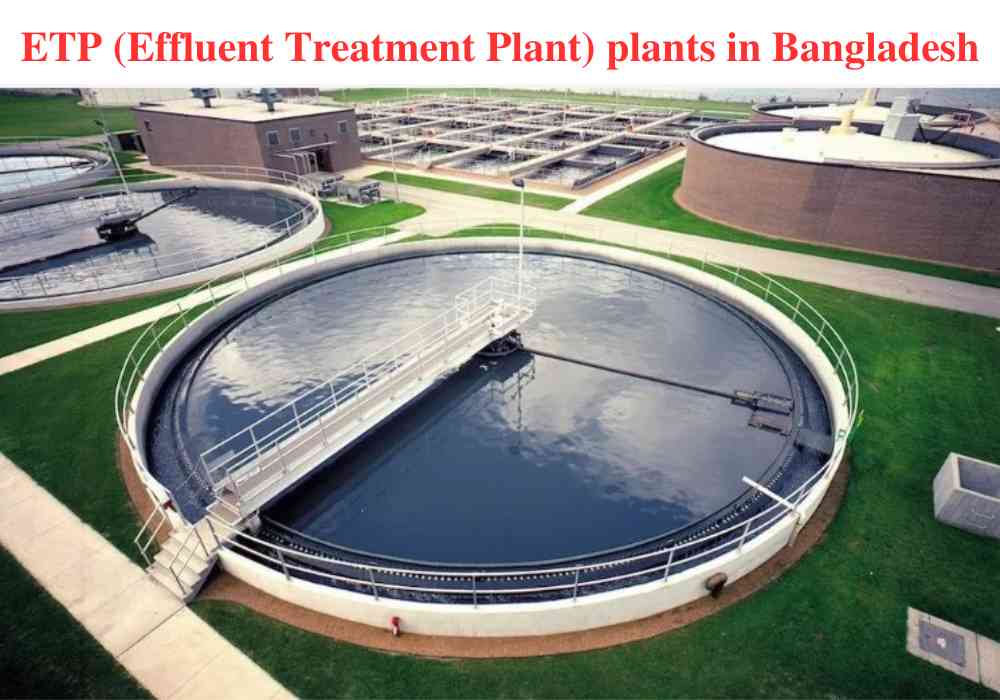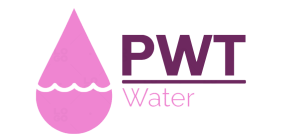ETP (Effluent Treatment Plant) plants in Bangladesh
ETP (Effluent Treatment Plant) plants are a kind of wastewater treatment framework that is intended to treat industrial effluents before release into the climate. ETP plants utilize different physical, substance, and biological cycles to eliminate unsafe poisons from the wastewater.

Significance of ETP plants in Dhaka, Bangladesh
Bangladesh is a thickly populated country with a quickly growing industrial area. To resolve this issue, the Bangladesh government has made it obligatory for all industries to install ETP plants to treat their effluent before release. Effluent Treatment Plant help to eliminate poisons from wastewater and guarantee that main treated water is released into the climate.
ETP plants likewise advance sustainable industrial development by reducing the adverse consequence of industrial exercises on the climate.
Types of ETP Plants in Bangladesh
Chemical ETP Plants: These types of ETP plants utilize synthetic responses to treat effluent (wastewater) from industries. Instances of compound ETP plants include the utilization of coagulants, flocculants, and disinfectants.
Biological ETP Plants: These types of ETP plants use microorganisms to separate natural matter in the wastewater. Instances of biological ETP plants include actuated slop plants, sequencing group reactors, and biofilters of effluent treatment plant in Bangladesh.
Physical ETP Plants: These types of ETP plants utilize physical cycles to eliminate poisons from wastewater. The wastewater through different physical obstructions or channels of physical ETP plant include sedimentation tanks, filtration frameworks, and film innovations of physical ETP plants.
ETP plant guidelines in Gazipur city
In Bangladesh, the Ecological Preservation Rules of 1997 and the Natural Protection Demonstration of 1995 are the primary guidelines governing Effluent Treatment Plants (ETPs).
The Ecological Preservation Demonstration of 1995 gives the lawful structure to the security, protection, and improvement of the climate.
The Ecological Preservation Rules of 1997 give explicit guidelines to the release of effluents from industrial cycles. According to these principles, all industries should get their wastewater conform to the endorsed norms prior to discharging it into any water body.
The guidelines of ETP Plant temperature, suspended solids, biological oxygen interest (Body), compound oxygen interest (COD), and absolute disintegrated solids (TDS).
Industries are expected to obtain a Natural Leeway Testament (ECC) from the DoE prior to setting up an ETP. They should likewise install and work the ETP in agreement with the guidelines and principles set by the DoE. Inability to follow the guidelines can bring about fines, detainment, or the conclusion of the industry.
In outline, the guidelines governing ETPs in Bangladesh mean to guarantee that industrial wastewater is blessed to receive fulfill the recommended guidelines and doesn’t hurt the climate and general wellbeing.
ETP Plant Cycle in Bangladesh
The ETP plant process in Bangladesh commonly includes three main phases of treatment: primary, secondary, and tertiary treatment.
Primary Treatment: The primary treatment stage involves the physical evacuation of huge solids and particles from the wastewater through cycles like screening, sedimentation, as well as buoyancy. This stage plans to decrease the suspended solids and natural matter in the wastewater.
Secondary Treatment: The secondary treatment stage utilizes biological cycles to additional treat the wastewater by breaking down natural matter and removing broke up solids. Normal strategies utilized in Bangladesh for secondary treatment include actuated muck process, sequencing group reactor (SBR), and film bioreactor (MBR).
Tertiary Treatment: The tertiary treatment stage is intended to eliminate any remaining contaminants that might not have been taken out in the primary and secondary treatment stages. High level treatment techniques like opposite assimilation, nanofiltration, and bright (UV) disinfection might be utilized to accomplish the ideal degree of wastewater quality before it is released into the climate.
Generally speaking, the ETP plant process in Bangladesh is significant for ensuring that industrial wastewater is dealt with and released in an ecologically capable way, in consistence with nearby guidelines and norms.
Best advantage of ETP Plants in Bangladesh 2023
ETP (Effluent Treatment Plant) plants in Bangladesh offer a few benefits, including reducing water contamination, protecting general wellbeing, and minimizing ecological harm for reduce industrial wastewater.
One of the primary benefits of ETP plants is their different physical, substance, and biological strategies to eliminate destructive poisons and contaminants from the water prior to releasing it into regular water bodies.
Industrial wastewater, on the off chance that not treated as expected, can contain unsafe synthetics and toxins that can present serious wellbeing dangers to people and creatures. ETP plants forestall these adverse consequences by treating wastewater prior to releasing it into the climate.

Difficulties of ETP Plants in Bangladesh
The ETP (Effluent Treatment Plant) industry in Bangladesh faces a few difficulties, including an absence of mindfulness, significant expenses, and restricted mechanical capacities.
There, first and foremost, is an absence of mindfulness among business proprietors and the overall population about the significance of implementing ETPs. Numerous industries don’t understand the effect of their wastewater on the climate and human wellbeing. This absence of mindfulness often brings about inadequate funding and backing for ETP execution and activity.
The significant expenses of ETPs can be a hindrance to section for organizations that are now struggling to remain above water in a serious market.
Ultimately, restricted mechanical capacities are difficult for ETPs in Bangladesh. There is an absence of talented work, specific hardware, and cutting edge innovation expected to really work and maintain ETPs. Also, the absence of admittance to present day innovation and gear makes it challenging to meet the increasingly stringent natural principles and guidelines.
Over all ETP Plant
Effluent Treatment Plants (ETPs) have been laid out in Bangladesh to resolve the issue of industrial wastewater contamination. Throughout recent many years, the public authority has taken different initiatives to implement ecological guidelines and advance the foundation of ETPs in industries. Thus, there are presently in excess of 500 ETPs in Bangladesh, basically in the material and piece of clothing industries.
Nonetheless, notwithstanding the headway made, there are still difficulties in ensuring that all industries consent to ecological guidelines and appropriately maintain their ETPs.
Moreover, it is essential to make mindfulness among industries and general society about the benefits of maintaining a spotless climate and the results of polluting it. Notwithstanding, there is still work to be finished in ensuring consistence with guidelines and improving the viability of ETP.
